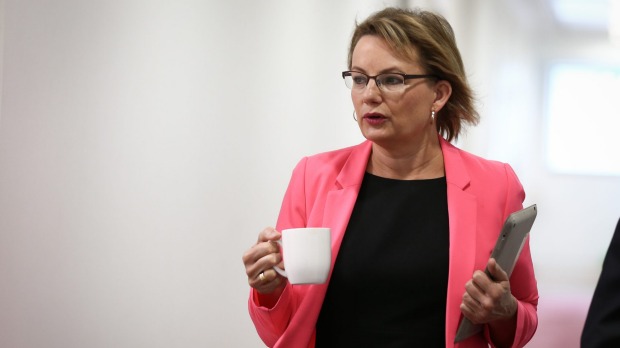
It’s 7am, November 2017. The queue for the national weigh-in snakes from Braddon to Bunbury.
The Ten Network has been forced to cancel its biggest money-spinner, Australia’s Biggest Loser, because no-one watches it any more. We’ve all become the biggest losers.
It’s the impact of controversial changes first mooted by the then Health Minister Sussan Ley in 2015. She began with a sneaky survey in November 2015 as she sought to radicalise the health insurance industry and punish the poor.
This week, Ley revealed a survey whereby Australians can express their views about private health insurance, “an important part of Australia’s health system . . . [offering] consumers greater choice, benefits for some services not covered by Medicare, and sometimes shorter waiting periods for their medical treatment”.
It’s a snaky little survey and even asks whether GP consultations should be included in private health insurance. This is a continuation of the undermining of Medicare, begun by former prime minister Tony Abbott. Some of the other options on offer include charging more for health insurance for smokers and the overweight – in other words, shifting the cost to those most at risk. As Stephen Duckett, health program director at the Grattan Institute, says, smokers are disproportionately low income earners.
And of course, smokers already pay because of the tax on cigarettes. That tax is user-pays, in other words, it produces enough revenue to fund the cost to the healthcare system, says Simon Chapman, professor of public health at the University of Sydney. It’s just a shame that money goes into consolidated revenue instead of directly into the health system.
How will health insurers know which of us is most at risk? Yes, it’s those national weigh-ins – with armies of binge dieters just before public humiliation. As for tracking down smokers, how would that work? Compulsory blood and urine testing? Maybe telcos will now be forced to hand over the data from our fitness apps.
The glowing promotional work done by the Minister for Health on behalf of the private health insurance industry does not reflect the experience of Australians.
The ACCC released a report last month which was clear in its findings. “While health insurers may be strictly compliant with the requirements of the Private Health Insurance Act and the Code, the research has revealed examples where representations by insurers to consumers, including when entwined with policy variations, may be at risk of breaching the consumer laws.”
My own experience – paying thousands of dollars a year yet still having to pay huge costs at time of hospitalisation – are common. The figures released on the Australian Prudential Regulation Authority website on behalf of private insurers; and one set of numbers made it very clear why private health insurance is a tough sell. If you have a good read of your health insurance, you will see a multiplicity of exclusions, co-payments and excesses which will make your actual insurance premiums look teensy in comparison.
In September 1995, more than 6 million Australians had health cover. Of those 6 million, just under 80 per cent of people were fully covered. They had no co-payment, there were no exclusions. If you were privately insured and you had a baby, you didn’t have to pay your hospital anything more. In June this year, with the latest figures released by the private health insurance funds, that figure had slipped to 17 per cent. Yes, just under one in six Australians – and the 11 million insured – has the kind of insurance where there is no gap, no co-payment, no excess, no nothing. I don’t have access to where these lucky people insure – but my educated guess is that it is with insurers which choose your doctor and hospital for you.
Australians already pay a risk rating. The figures released for the June 2015 quarter on membership trends from private health funds reveal how Australians use the system – and there is even more evidence if you look at longitudinal data from APRA sourced from the private health insurers (from March 2000 to September 2000, the number of 30-year-olds insured nearly doubled) . As soon as our parents stop paying, we drop out – and duck back in just before our premiums go up. As Duckett says of any proposed increase for any segment: “It’s anomalous to have a further premium increase on top of what we have already.”
Indeed, we all pay for private health insurance even if we don’t have it, through the mechanisms of levies and rebates; and that can really only be explained through Abbott’s passionate sloganeering in 2012 when he said of the then Liberal opposition: “Private health insurance is in our DNA.”
As Jane Hall, a professor of health economics at the University of Technology Sydney, says, 100 per cent of us subsidise health insurance for around 47 per cent of the population. In 2009, she oversaw a review of the evidence on financial incentives for health behaviour change. Financial incentives don’t work on the complex or the ongoing. They might work on getting people along to be immunised but they won’t help unpack the problems of those who struggle with making healthy lifestyle choices.
“There is a great case for saying we want to have policies that support healthy lifestyles . . . but there are more effective and fairer ways to do it than through private health insurance.”
Australia, if we take this on, we will all be losers.
